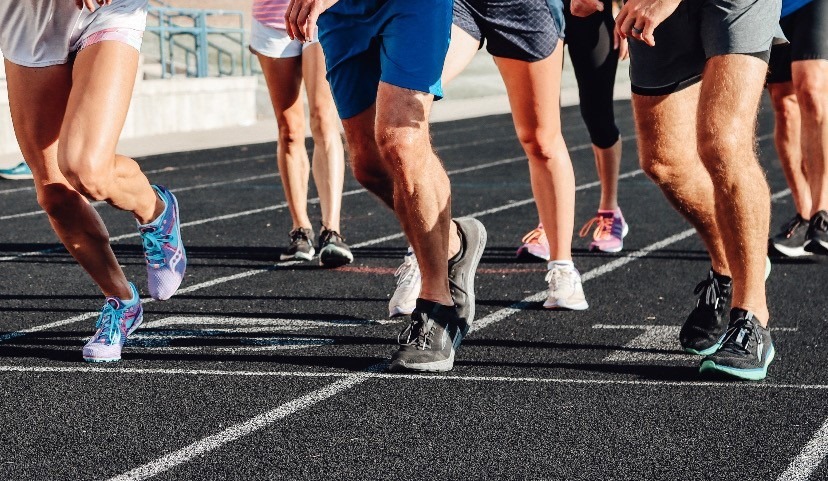


Injuries happen. They’re part of every sport or activity, and typically will happen to almost everyone at some point over their training career. Often when people step into our office, they tell us about the single movement that led to the ache or pain that they are experiencing. Unfortunately, except in the case of significant trauma (ex: NFL running back tears his ACL while being tackled) this is almost never the case. Overuse injuries, or even “tweaks” do not happen in a vacuum. They’re not caused by that one, single wrong movement. They are often caused by many, repetitive wrong movements and choices that could have been improved along the way. But what else impacts the severity or frequency of injuries we deal with?
There are many factors involved in almost every issue we face, and it is hard to determine exactly how much of a role each factor plays. Let’s explore some of the most important ones you should consider.
Sleep
Prioritizing sleep goes a long way for many reasons and is a crucial aspect of injury prevention. Sleeping accelerates our recovery processes including recovery from inflammation, muscle repair and restocking cellular energy. Aside from being the prime time that our muscles and bones recover from the stressors of daily life, the recovery and rest for the brain and nervous system may be the most important piece of sleeping. Aim for eight hours of sleep per night as getting less correlates with an increase in injury risk.
Nutrition
What we eat impacts our performance, recovery and how we feel. In general aim to make the majority of what you eat consist of whole food sources with plenty of vegetables and healthy fats. Yes, carbohydrates are important for energy, but don’t forget the protein. Most of the endurance athletes we work with are significantly under consuming protein for their body mass and activity level. For proper muscle recovery and repair we must eat an adequate amount of protein. Our general guideline is to aim for ~1g/lb of body weight per day.
Stress Management
How we manage our stress has a big impact on our ability to have the energy to train hard, and recover well. We all have things that cause stress in our lives, whether it be work, family dynamics, finances, traffic, traveling, you name it. What is important is that we have a strategy around combating these stressors with healthy outlets so that they do not wreak havoc on our bodies and nervous/immune systems. Running is a great outlet! Sleep, nutrition and hydration also impact this a great deal. Have you ever noticed that when you get stressed, you crave junk food? Me too! Unfortunately, the more we give into that temptation the more our body craves that outcome.
Hydration
Fluid intake is another key aspect to injury prevention and recovery. Adequate hydration helps maintain soft tissue integrity during workouts and also helps clear waste from muscle tissue post workout. Pre and post workout hydration is crucial and coffee doesn’t count! Aim for a daily amount of at least half of your body weight in ounces of water. That’s 75oz for a 150 pound individual. Now, that’s a baseline to hit for everyone, even before factoring in training or activity level. Replace lost fluids in addition to this. If you are exercising and sweating regularly it is generally a good idea to include some form of electrolyte replacement into the mix. Often, when doing a great job following the guidelines in the nutrition section above, we are under consuming sodium. We recommend sodium supplementation to many of our athletes.
Movement
It is hard to quantify the importance that daily movement plays on our ability to be resilient from injury. What we do know is that individuals with sedentary jobs or lifestyles tend to lack mobility, range of motion, strength and tolerance to exercise much more than those who are moving often. Take the typical desk worker for example. Yes, it’s true that standing work stations are preferred over sitting, however just this one change alone is not enough! What’s important is to change positions often throughout the day and get our body into different shapes. Think about getting your hips, ankle, shoulder, spine etc. through a full range of motion for a few minutes and then return to your work. Remember, cliches don’t become cliches unless they are true… When it comes to mobility, if you don’t use it, you lose it.
Before moving on let’s touch on positional errors. What we mean by this is finding ourselves in abnormal or non-optimal positions/postures throughout the day. Examples: standing with duck feet, feet turned outward, sitting in a slumped position over your keyboard or standing with your knees locked out throughout the day. These positions do not serve our tissue and joints well in the long term, though they may provide short term relaxation or stability. The more you can catch yourself and correct these throughout the day, the more natural being in a more optimal position will start to feel and you will tend to bias that way automatically! If you struggle with this, we can help.
Community
Without going down too deep of a rabbit hole – surround yourself with people that support the lifestyle you are attempting to lead. The old adage is that we are the average of the five people we spend the most time around. If you think about who those people are for you, do you like what you find? Your friend group, work circle, and training environment are all things where community and camaraderie make a big difference. Small modifications go a long way.
We don’t recommend biting off more than you can chew in an effort to implement these things if you find holes in your day. Instead, make small changes, work to be consistent with them until you build a habit. Then implement another small change.
Until next time, happy training.

0

0
Comments :